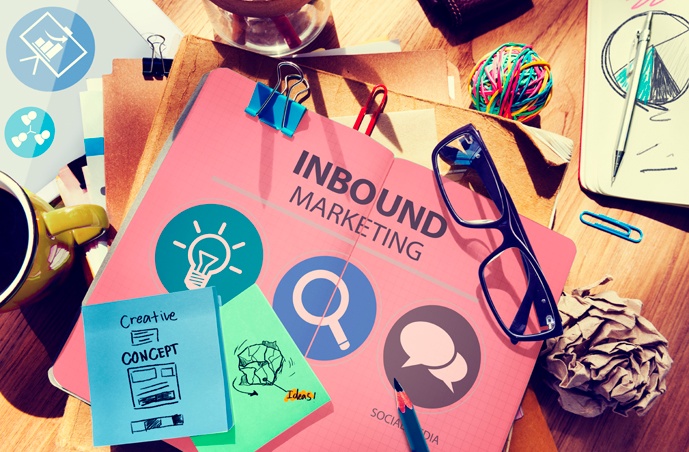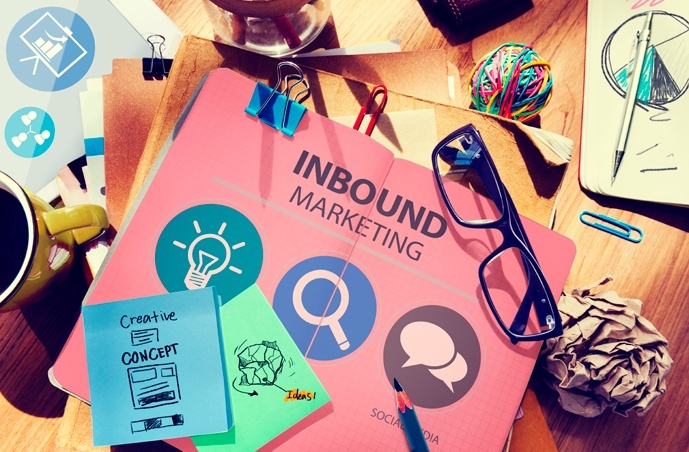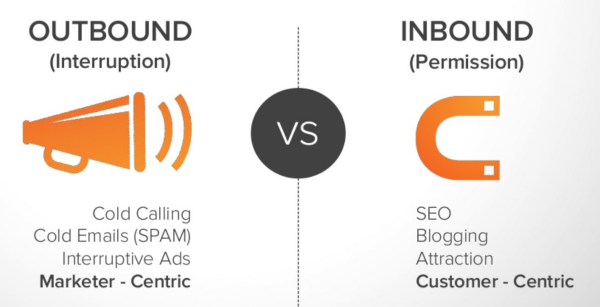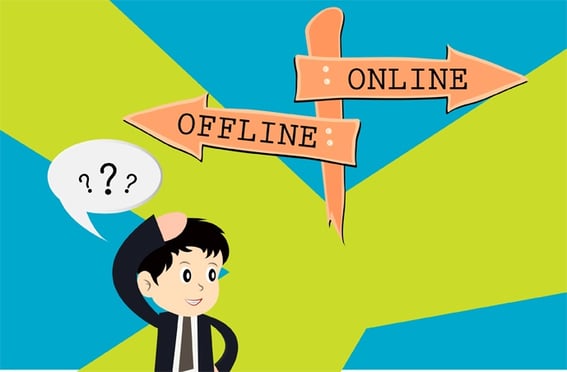Outbound and Inbound Marketing: What's the Difference?


Inbound marketing, often referred to as 'new marketing', is the fastest growing form of marketing since 2006. Outbound marketing, also known as 'old marketing' follows the more traditional methodologies. They are both effective forms of marketing, but "does one have more of an impact than the other?" is the question many people ask.
Well, I have investigated it for you, and found some significant differences between the two.
What is the difference between outbound and inbound marketing?

Inbound is often referred to as the marketing of the future, taking full advantage of technology. Blogging and content creation is an integral part of inbound marketing. In fact, creating more content, especially if it's helpful and educational, will give you a larger chance of being found by your target personas.
It also focuses on SEO (Search Engine Optimisation) as well as other techniques that are used to attract the customer allowing them to make the choice to learn about your services or products.
The next step in the process is to then convert all these visitors into leads for your business through the use of landing pages and email workflows, and then ultimately close them into customers.
On the other hand, outbound marketing does the opposite, it is marketer-centric meaning that it's based more on what the marketer wants you to know as opposed to the organic attraction process. This includes a series of more or less effective tools. For example cold calling and spam emails have now been proven to have become a lot less effective. Just think of how many cold calls you receive on a regular basis, and how many you outright ignore because you are sick of being pestered. Furthermore, they can end up pushing customers away, which is not the goal! However some outbound techniques can still prove to generate great results, such as exhibitions, as long as they have a target and aimed at at informing and educating prospects.
Outbound Marketing
Recent studies show that 45% of direct mail never gets opened, most of it landing in spam folders where it is forgotten. 200 million people are on the national Do Not Call Registry reflecting the amount of people who are sick of pestering sales calls.
However, not all outbound marketing is to trash, as it is still really effective if used in the right way. For example, targeted leafleting and exhibitions are still powerful tools for attracting leads, especially if used in combination with inbound techniques, making the purpose to educate.
What needs to be stopped is the use of cold calling and spam emails due to their ineffectiveness and potential negative impact on your brand. If you are too pushy, it can actually put customers off and place your company and brand under a negative light. When selecting a method of outbound marketing one should filter out the interruptive aspects and make use of the educational content to get the best possible results.
Inbound Marketing
The State of Inbound report claims that inbound can triple leads and it costs roughly 62% less per lead by making use of technology. Inbound marketing attracts customers, sparking their interest with educational content. It comes in many forms: blogging, public speaking, earned social media, press, public relations and more.
The reason for this is it's all about understanding their customers: what are their needs? What are their goals? You can then educate these customers and offer them solutions specifically tailored to their needs, which helps them make more informed decisions and builds trust.
When you publish educational content in the right place and right time, your marketing becomes relevant and helpful to your customers, so in turn they help you by promoting your services.
Read more on what is inbound marketing here >
Conclusion
By directly comparing inbound and outbound marketing it is quite easy to see that they might have the same goals, but their contrasting methodologies send them on very different paths to reach them. Inbound marketing entertains, educates and provides added value to the potential customer, whereas if you were to use outbound marketing you would have to be careful not to use a method that interrupts users because it could cancel out the positive aspects.
Customer attraction differs between the two:
- Inbound customers are attracted organically, earned through search engine keywords, referrals from other happy customers and social media.
- Outbound customers are sought out via spam email and cold calls which need to be put to an end, but when it comes to other aspects, such as exhibitions and targeted offline campaigns, continue!
Finally, when it comes to interaction with customers, communication is key. When it comes to outbound communication it is often one way. Inbound marketing takes the ideal approach as the communication is two way; it is informative and educational which sparks interest.
At the end of the day, marketing is marketing and businesses all over the world want to grow. Now that you know the difference between inbound and outbound marketing it us up to you to choose which you think best fits your business.
More from Inbound Marketing

Why Should I Use Inbound Marketing?
Since 2006, inbound marketing has been the most effective method for doing business online, this is because it generates 3x...
What is Inbound Marketing?
Since 2006, inbound marketing has been the most effective method for doing business online. According to the State of Inbound...






